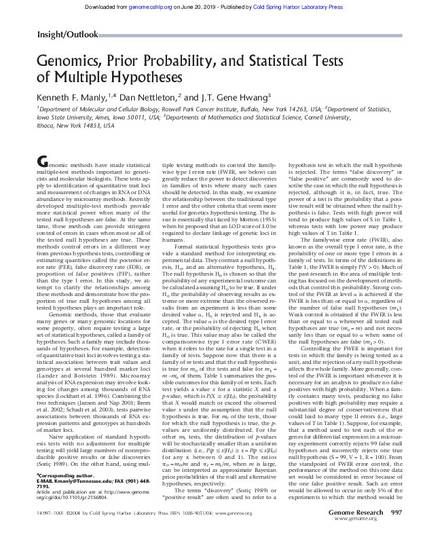
Genomic methods have made statistical multiple-test methods important to geneticists and molecular biologists. These tests apply to identification of quantitative trait loci and measurement of changes in RNA or DNA abundance by microarray methods. Recently developed multiple-test methods provide more statistical power when many of the tested null hypotheses are false. At the same time, these methods can provide stringent control of errors in cases when most or all of the tested null hypotheses are true. These methods control errors in a different way from previous hypothesis tests, controlling or estimating quantities called the posterior error rate (PER), false discovery rate (FDR), or proportion of false positives (PFP), rather than the type I error. In this study, we attempt to clarify the relationships among these methods and demonstrate how the proportion of true null hypotheses among all tested hypotheses plays an important role.
Available at: http://works.bepress.com/dan-nettleton/102/

This article is published as Manly, Kenneth F., Dan Nettleton, and JT Gene Hwang. "Genomics, prior probability, and statistical tests of multiple hypotheses." Genome research 14, no. 6 (2004): 997-1001. doi: 10.1101/gr.2156804. Posted with permission.